Sean Bienvenidos, Japonistasarqueológicos A Una Nueva Entrega, De Arqueología En La Que Comentaremos,


Sean bienvenidos, japonistasarqueológicos a una nueva entrega, de arqueología en la que comentaremos, cómo era vivir hace 2000 años en el período Yayoi, una vez dicho esto pónganse cómodos que empezamos. — En el emplazamiento, podréis vivir la experiencia de como si estuvierais en las viviendas, de dicho periodo, las recreaciones de los almacenes y los santuarios de las ruinas de toro se han reducido a una escala de aproximada al 80 % las paredes representan la naturaleza, de la época y de su estilo de vida. Siéntete como si hubieras viajado en el tiempo al pueblo Toro del período Yayoi, con nuestra máquina del tiempo, ya que puede ser una experiencia inolvidable, para todas las edades, porque la vida no ha cambiado en 2000 a 3000 años. — Espero que os guste y nos vemos en próximas publicaciones, que pasen una buena semana.
-
日本の考古学者諸君、ようこそ考古学の新連載へ。2000年前の弥生時代の暮らしとはどんなものだったのかについて語り合おう。 - 遺跡では、当時の住居がどのようなものであったかを体験することができます。トロ遺跡の倉庫や神社を約80%の縮尺で再現し、壁で当時の自然や生活様式を表現しています。まるでタイムマシンで弥生時代の登呂集落にタイムスリップしたかのような体験は、2000年から3000年経っても変わらない暮らしの中で、世代を問わず忘れられない思い出になることだろう。 - それでは、また次回もお楽しみに。
-
Welcome, Japanese archaeologists, to a new instalment of archaeology in which we will discuss what it was like to live 2000 years ago in the Yayoi period, so make yourselves comfortable and let's get started. - At the site, you can experience what it was like to live in the dwellings of that period, the recreations of the warehouses and shrines of the toro ruins have been reduced to a scale of about 80% and the walls represent the nature of the period and its lifestyle. Feel as if you have travelled back in time to the Toro village of the Yayoi period, with our time machine, as it can be an unforgettable experience, for all ages, because life has not changed in 2000 to 3000 years. - I hope you like it and see you in future publications, have a nice week.
詳しくは/more information:
https://www.shizuoka-toromuseum.jp/guide/admission/
More Posts from Noticiasarquelogicasjaponesas and Others





Sean bienvenidos japonistasarqueológicos, a una nueva entrega de arqueología japonesa, una vez dicho esto pónganse cómodos que empezamos. - Sí, hablamos de la armadura japonesa, se nos viene a la cabeza, la más característica, la de los samurais. ¿Hay alguna armadura más antigua? Sí, datan del periodo kofun o protohistorico, se sabe que en periodos anteriores las tenían de madera por los pocos restos que se han conservado al yayoi, ya que el Jomon fue un periodo de paz y no hay indicios de violencia. - La imagen de estas armaduras la tenemos en las famosas figuras, haniwa hechas de arcilla y utilizadas para los enterramientos, aunque todavía siguen siendo un misterio, estas armaduras estaban manufacturadas de hierro. - Espero que os haya gustado y nos vemos en próximas publicaciones, que pasen una buena semana. - 日本の考古学者たちよ、ようこそ。そう言われたら、くつろいで、さっそく始めましょう。 - そうですね、日本の鎧について話しているのですが、一番特徴的なのは侍の鎧ですね。 - この鎧のイメージは、土で作られ、埋葬に使われた有名な埴輪に見ることができますが、まだ謎が多いのですが、この鎧は鉄で作られていたのですね。 - 気に入っていただけたでしょうか、また今後の記事でお会いしましょう、良い一週間をお過ごしください。 - Welcome, Japanese archaeologists, to a new installment of Japanese archaeology, and once that's been said, make yourselves comfortable and let's get started. - Yes, we are talking about Japanese armour, the most characteristic one comes to mind is that of the samurai, are there any older armour? yes, they date from the Kofun or proto-historic period, we know that in earlier periods they were made of wood because of the few remains that have been preserved in the yayoi, since the Jomon was a period of peace and there is no evidence of violence. - The image of this armour can be seen in the famous haniwa figures, made of clay and used for burials, although they are still a mystery, these armours were made of iron. - I hope you liked it and see you in future posts, have a nice week.

Welcome, japonistarchaeologists, to another chapter of this series in which we will move to the Yayoi period in the middle of prehistory, which would be equivalent to the Neolithic. It would be the continuation of the Jomon period but more sophisticated. - The Yayoi period takes place in the year 300 BC until 250 BC, which would be equivalent to the 4th and 3rd centuries. During this period, rice cultivation will arrive from the Korean peninsula and will arrive from the south through the Kyushu peninsula, where we can currently find one of the great archaeological sites of this period in the Saga prefecture. First of all, we have already talked about the Paleolithic in previous chapters. When I can, we will finish it to be able to cover in more depth the Jomon, Yayi, Kofun or protohistoric period until the formation of the Japanese state. - Sewerage in Neolithic Japan? Surely we think of systems such as those of Sumeria, Rome and China, but of course it was a fairly rudimentary but effective system that was used for rice irrigation, for defense and for the health of the villages. It should be noted that in the Yayoi period the clans emerged, which is why the tribal wars of the Neolithic began to emerge due to the fight for resources to see which clan had much greater power and resources. Once this is clarified, as I said before, it would be a very rudimentary technology, but very advanced for the time. Is it still in use? Yes, since from this period until today the Japanese have continued to use it and improve it with regard to the sewage system mentioned above. That is why when the Europeans arrived for the first time they were surprised by the high level of hygiene. - In future publications we will talk about this period and those already mentioned above. I will bring you archaeological news about the remains of these settlements and the location of the drainage system and what the most important sites are. All this and much more. See you in future publications on archaeology and Japanese history and geography until next time.







Sean bienvenidos japonistasqueologicos a una nueva publicación en esta ocasión, os hablaré de La cámara de piedra más antigua de Higashi-Mikawa, que data de la primera mitad del siglo VI y fue descubierta en Toyohashi Mitsuyama. - El estudio se realizó hace 20 años, pero no se sabía con precisión, si el enterramiento era de tipo fosa o de entrada lateral. Tiene una entrada única que no se puede apreciar en otros túmulos funerarios, el túmulo se llama Mitsuyama kofun, data de principios del siglo VI d.c y está ubicado en el parque que lleva su mismo nombre, localizado en la ciudad de Toyohashi, en la prefectura de Aichi. - El misterio del colapso del techo de piedra ya no se encuentra en su posición original, se desentierra cerámica en el siglo XI y el túmulo se derrumbó en el periodo Heian, los monjes reutilizarían el material. La persona enterrada en el túmulo fue del clan gobernante, dicho uso como puerto en la bahía de Mikawa en lo que respecta al comercio con Corea. - Además, hay pocos restos de túmulos de la época, dicho enterramiento estaba en un área tranquila que pudo haber formado parte del templo Sakatsu-ji de hay su nombre. - Espero que os haya gustado y nos vemos en próximas publicaciones de historia y arqueología nipona. - Welcome to a new publication, this time, I will tell you about the oldest stone chamber of Higashi-Mikawa, which dates back to the first half of the 6th century and was discovered in Toyohashi Mitsuyama. - The study was carried out 20 years ago, but it was not clear whether the burial was a pit or a side-entry burial. It has a unique entrance that cannot be seen in other burial mounds, the burial mound is called Mitsuyama kofun, dates back to the early 6th century AD and is located in the park of the same name, located in Toyohashi City, Aichi Prefecture. - The mystery of the collapsed stone roof is no longer in its original position, pottery was unearthed in the 11th century and the tumulus collapsed in the Heian period, the material was reused by the monks. The person buried in the burial mound was from the ruling clan, which used it as a port in Mikawa Bay for trade with Korea. - In addition, there are few remains of burial mounds from the period, and the burial site was in a quiet area that may have been part of the Sakatsu-ji temple, hence the name. - I hope you enjoyed it and see you in future posts on Japanese history and archaeology. - 新刊のご案内です。今回は、豊橋三ツ山で発見された6世紀前半の東三河最古の石室についてお話しします。 - 20年前の調査ですが、竪穴式埋葬なのか横穴式埋葬なのかがはっきりしませんでした。他の古墳には見られない独特の入口がある。この古墳は三ツ山古墳と呼ばれ、紀元6世紀初頭のもので、愛知県豊橋市にある同名の公園内にある。 - 崩れた石屋根の謎は、もはや元の位置にはない。11世紀には土器が出土し、平安時代には古墳が崩れ、その材料は僧侶によって再利用された。古墳に埋葬された人物は、三河湾の港として朝鮮との交易に利用した支配層の一族である。 - また、当時の古墳の遺構が少なく、埋葬地が閑静な場所にあり、坂東寺の一部であった可能性があることから、この名がついたという。 - 楽しんでいただけたでしょうか。また、日本の歴史や考古学に関する今後の記事でお会いしましょう。


Sean bienvenidos a la última publicación del año hoy dia 31/12/2021 se come Toshikoshi soba, para despedir el año ¿Cuándo surgió ?y ¿por qué?. _ Ya durante el siglo V ya era bastante popular , se ha comido de formas distintas proviene del trigo sarraceno, se comía tal cual o se mezclaba con agua y luego se cocinaba lo más probable es que fuera introducido por china a través de Corea . - ¿Cómo se llamaba al plato popular del siglo V? soba-gaki y para beber soba-yu( este era más popular en el periodo edo para las enfermedades). El trigo sarraceno se hacía como unas albóndigas que después se comen hervidas, ¿Posible comida para ricos?. La soba como la conocemos data del periodo Edo hasta nuestros días siglo 16 año 1574 aproximadamente. - ¿Combinación con la temperatura? Se hizo popular por la misma época mencionada anteriormente, la soba tiene vitamina B1. - ¿Cocían este plato o su historia? espero que se lo pasen bien en la noche de nochevieja un cordial saludo. -
今日の最後の出版物へようこそ2021年12月31日大晦しそばが食べられて、今年に別れを告げます。それはいつ起こったのですか?そしてなぜですか? すでにV世紀の間にそれはすでに非常に人気があり、それはさまざまな方法で食べられました、それはそばから来ます、それはそのまま食べられるか、水と混合されてから調理されました、それは韓国を通して中国によって導入された可能性が高いです。 5世紀の人気料理は何と呼ばれていましたか? そばがきとそば湯を飲む(江戸時代は病気で人気がありました)。 そばはミートボールのように作られ、後で茹でて食べられます。 ご存知のそばは江戸時代から現在の16世紀、1574年頃までさかのぼります。 温度との組み合わせ? 上記と同時期に人気を博し、そばにはビタミンB1が含まれています。 彼らはこの料理またはその歴史を調理しましたか? 大晦日、心からのご挨拶をお楽しみください。 -
Welcome to the last publication of the year today 12/31/2021 Toshikoshi soba is eaten, to say goodbye to the year. When did it arise? And why ?. Already during the V century it was already quite popular, it has been eaten in different ways, it comes from buckwheat, it was eaten as it is or mixed with water and then cooked, it is most likely that it was introduced by China through Korea. What was the popular dish of the 5th century called? soba-gaki and to drink soba-yu (this was more popular in the Edo period for illnesses). Buckwheat was made like meatballs that are later eaten boiled. Possible food for the rich? Soba as we know it dates from the Edo period to the present day 16th century, approximately 1574. Combination with temperature? It became popular around the same time mentioned above, soba has vitamin B1. Did they cook this dish or its history? I hope you have a good time on New Years Eve, a cordial greeting.
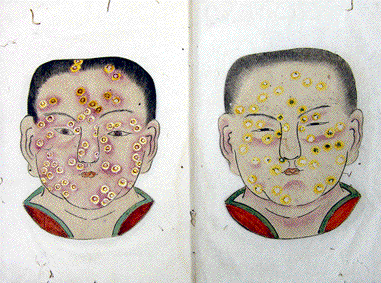
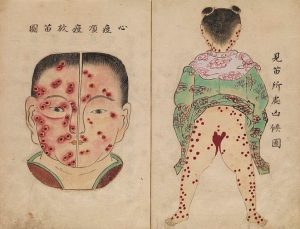
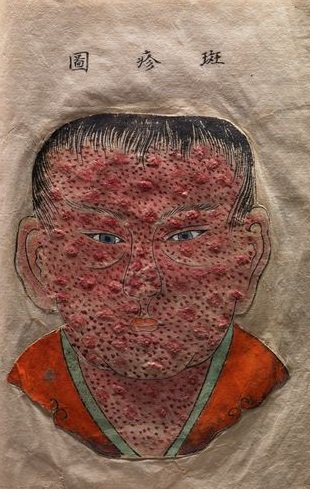


Sean bienvenidos a una nueva entrega de historia en esta ocasión, os comentaré una de las epidemias que azotó al país del Sol naciente una vez dicho esto póngase cómodos que empezamos. - La epidemia tuvo lugar en el periodo Nara (710-794) y la espidemia tubo lugar en 735-737.¿Conocían la epidemia? - Espero que os guste y nos vemos en próximas publicaciones, que pasen una buena semana. - Welcome to a new installment of history on this occasion, I will tell you about one of the epidemics that hit the country of the rising sun, having said that, make yourself comfortable and let's start. - The epidemic took place in the Nara period (710-794) and the epidemic took place in 735-737. Did they know about the epidemic? - I hope you like it and see you in future publications, have a good week. - この機会に、新たな歴史へようこそ。日出ずる国を襲った疫病の一つについてお話します。そうは言っても、気を楽にして始めましょう。 - 奈良時代(710年~794年)に流行し、735年~737年に流行しました。 彼らは疫病について知っていましたか? - 気に入っていただければ幸いです。今後の出版物でお会いできることを願っています。良い一週間をお過ごしください。
El origen de un país y su prehistoria, un paseo por la historia del país del sol naciente. /国の成り立ちと先史、日出ずる国の歴史を歩く。/The origin of a country and its prehistory, a walk through the history of the country of the rising sun.
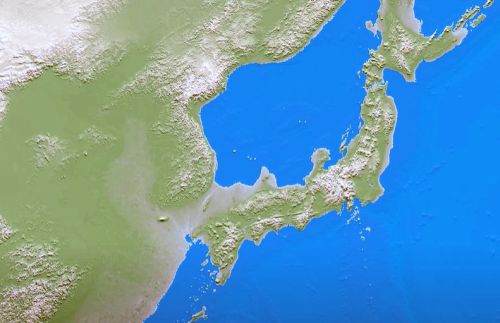



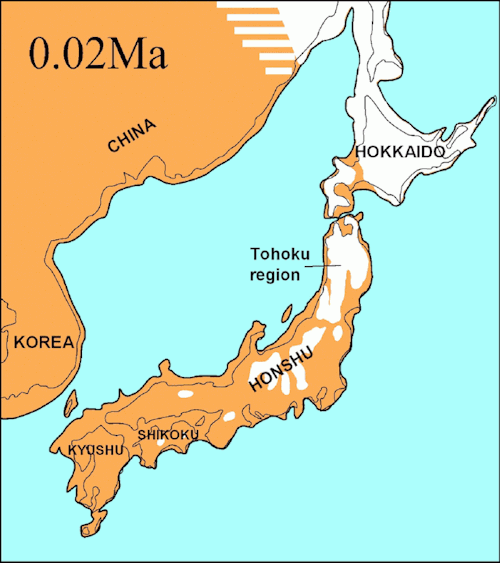

Sean bienvenidos, japonistasarqueológicos, a una nueva entrega de arqueología nipona e historia nipona, una vez dicho esto pónganse cómodos qué empezamos.
-
En los capítulos 1,2,3:Hablamos de: ¿Cuándo llegaron por primera vez los homínidos a Japón? ¿De qué vivían? Hablamos un poco de su geografía, de las cuatro eras glaciales, también se mencionó el holoceno. Empezamos a hablar del pleistoceno, y de cuando empezó la prehistoria de hace 2,5 (esta fecha está desfasada actualmente ronda 4 millones, por los hallazgos de industria lítica) a 7 millones de años. Comentamos algunos homínidos: Homo neanderthalensis, Homo heidelbergensis, homo ergaster entre otros homínidos, comentamos como África es la cuna de la humanidad, y su diversidad de dispersiones migratorias. También se comentó la llegada los homínidos a Okinawa hace 30.000-40.000 años y los Ainus como posibles primeros pobladores. Seguimos hablando del pleistoceno, estuvimos explicando un poco sobre el pleistoceno, se mencionó un poco la formación del archipiélago, mencioné mi posible teoría y al final terminamos con ¿Cómo se llaman las placas tectónicas que forman el archipiélago?
-
Espero que os guste y nos vemos en próximas publicaciones, que pasen una buena semana.
-
日本の考古学者諸君、ようこそ、日本考古学と日本史の新連載へ!さあ、くつろいで、始めよう。
第1章、第2章、第3章では、「ヒト科の動物はいつ日本にやってきたのか?地理、4つの氷河期、完新世についても少し触れました。更新世について話し始め、先史時代が始まった250万年前(この年代は、石器産業の発見により、現在では約400万年古くなっている)から700万年前について話した。ホモ・ネアンデルターレンシス、ホモ・ハイデルベルゲンシス、ホモ・エルガスターなどのホミノイドについて解説し、アフリカが人類発祥の地であること、その移動分散の多様性について述べた。また、3万~4万年前の沖縄へのヒト科動物の到着と、最初の入植者である可能性のあるアイヌ人についても議論した。私たちは更新世について話を続け、列島の形成について少し説明し、私が可能性のある説を述べ、最後にこう締めくくった。 列島を形成しているプレートの名前は?
それではまた、良い一週間を。
-
Welcome, Japanese archaeologists, to a new instalment of Japanese archaeology and Japanese history, so make yourselves comfortable and let's get started.
In chapters 1,2,3:We talk about: When did hominids first arrive in Japan? What did they live on? We talked a little bit about their geography, the four ice ages, the Holocene was also mentioned. We started talking about the Pleistocene, and when prehistory began from 2.5 (this date is now out of date by about 4 million years ago, due to the findings of lithic industry) to 7 million years ago. We commented on some hominids: Homo neanderthalensis, Homo heidelbergensis, homo ergaster among other hominids, we commented on how Africa is the cradle of humanity, and its diversity of migratory dispersions. We also discussed the arrival of hominids in Okinawa 30,000-40,000 years ago and the Ainus as possible first settlers. We continued talking about the Pleistocene, we were explaining a bit about the Pleistocene, the formation of the archipelago was mentioned a bit, I mentioned my possible theory and at the end we finished with What are the names of the tectonic plates that form the archipelago?
I hope you like it and see you in future posts, have a nice week.


Capítulo 2: El origen de un país y su prehistoria, un paseo por la historia del país del sol naciente. El Pleistoceno Sean bienvenidos, a una nueva serie, de arqueología prehistórica en esta ocasión, nos trasladamos al país del sol naciente. En el capítulo anterior, estuvimos dando una pequeña introducción, de la prehistoria nipona, ha llegado la hora de matizar más en profundidad cada apartado.
-
En este capítulo, nos vamos a centrar en el pleistoceno, para entender la evolución meteremos, algunos contextos del mundo para que puedan ir comprendiendo el pleistoceno japonés del resto del mundo. La prehistoria humana comienza hace unos 2,5 a 7 millones de años aproximadamente, los primeros homínidos, salieron de África, Como son el caso de: Homo neanderthalensis, Homo heidelbergensis, Homo ergaster entre otros homínidos.
-
Sabemos que los primeros homínidos, que salieron de la cuna de áfrica, fueron los homo habilis y erectus los cuales se fueron desplazando por los distintos continentes, pasando primero por la zona de la península del Sinaí y luego pasaron por el corredor siro palestino.
-
En el capítulo anterior, salió la pregunta¿Cómo llegaron los primeros homínidos al archipiélago? Llegaron hace unos 30.000 a 90.000 aproximadamente, han salido recientes estudios arqueológicos, en respecto a esta parte, la cual ya os la comentaré en una noticia arqueológica, ¿De qué medio disponían?, probablemente, a través de canoas o balsas llegando así a la zona de Okinawa, ¿Quiénes habitaban Japón cuando ellos llegaron?, pues los Ainu, ¿cuándo llegaron?, aproximadamente hace unos 110.000 y 10.000 años antes de cristo.
-
Este capítulo lo vamos a tener que ir dividiendo en partes para irlo trabajando poco a poco. Espero que os haya gustado y nos vemos en el siguiente capítulo. Un fuerte abrazo.





Sean bienvenidos a una nueva entrega de historia en esta ocasión, os comentaré una de las epidemias que azotó al país del Sol naciente una vez dicho esto póngase cómodos que empezamos. - La epidemia tuvo lugar en el periodo Nara (710-794) y la espidemia tubo lugar en 735-737.¿Conocían la epidemia? - Espero que os guste y nos vemos en próximas publicaciones, que pasen una buena semana. - Welcome to a new installment of history on this occasion, I will tell you about one of the epidemics that hit the country of the rising sun, having said that, make yourself comfortable and let's start. - The epidemic took place in the Nara period (710-794) and the epidemic took place in 735-737. Did they know about the epidemic? - I hope you like it and see you in future publications, have a good week. - この機会に、新たな歴史へようこそ。日出ずる国を襲った疫病の一つについてお話します。そうは言っても、気を楽にして始めましょう。 - 奈良時代(710年~794年)に流行し、735年~737年に流行しました。 彼らは疫病について知っていましたか? - 気に入っていただければ幸いです。今後の出版物でお会いできることを願っています。良い一週間をお過ごしください。





Sean bienvenidos, japonistasarqueologicos a una entrega de arquitectura japonesa una vez dicho esto pagase cómodos que empezamos. - Esta pagoda se localiza en Kyoto y data del siglo XV, a este tipo de pagodas se les llama Tahōtō, se caracteriza por tener solo dos plantas, las ventanas tienen forma de flor de loto, clara influencia de china y Korea. - Espero que os haya gustado y nos vemos en próximas publicaciones que pasen una buena semana. - ジャポニスタサルケオロギコスの皆さん、日本建築の配信へようこそ。そうは言っても、安心して始めてください。 - この塔は京都にあり、15 世紀に建てられました。このタイプの塔は多宝塔と呼ばれ、2 階しかないのが特徴で、窓は蓮の花の形をしており、明らかに中国と韓国の影響を受けています。 - 気に入っていただければ幸いです。今後の投稿でお会いしましょう。良い一週間をお過ごしください。 - Welcome, japonistasarqueológicos to a delivery of Japanese architecture, having said this, pay comfortable that we start. - This pagoda is located in Kyoto and dates from the 15th century, this type of pagoda is called Tahōtō, it is characterized by having only two floors, the windows are in the shape of a lotus flower, a clear influence from China and Korea. - I hope you liked it and see you in future posts, have a good week.





Sean bienvenidos japonistasarqueológicos, a una nueva entrega de arqueología japonesa, una vez dicho esto pónganse cómodos que empezamos. - Sí, hablamos de la armadura japonesa, se nos viene a la cabeza, la más característica, la de los samurais. ¿Hay alguna armadura más antigua? Sí, datan del periodo kofun o protohistorico, se sabe que en periodos anteriores las tenían de madera por los pocos restos que se han conservado al yayoi, ya que el Jomon fue un periodo de paz y no hay indicios de violencia. - La imagen de estas armaduras la tenemos en las famosas figuras, haniwa hechas de arcilla y utilizadas para los enterramientos, aunque todavía siguen siendo un misterio, estas armaduras estaban manufacturadas de hierro. - Espero que os haya gustado y nos vemos en próximas publicaciones, que pasen una buena semana. - 日本の考古学者たちよ、ようこそ。そう言われたら、くつろいで、さっそく始めましょう。 - そうですね、日本の鎧について話しているのですが、一番特徴的なのは侍の鎧ですね。 - この鎧のイメージは、土で作られ、埋葬に使われた有名な埴輪に見ることができますが、まだ謎が多いのですが、この鎧は鉄で作られていたのですね。 - 気に入っていただけたでしょうか、また今後の記事でお会いしましょう、良い一週間をお過ごしください。 - Welcome, Japanese archaeologists, to a new installment of Japanese archaeology, and once that's been said, make yourselves comfortable and let's get started. - Yes, we are talking about Japanese armour, the most characteristic one comes to mind is that of the samurai, are there any older armour? yes, they date from the Kofun or proto-historic period, we know that in earlier periods they were made of wood because of the few remains that have been preserved in the yayoi, since the Jomon was a period of peace and there is no evidence of violence. - The image of this armour can be seen in the famous haniwa figures, made of clay and used for burials, although they are still a mystery, these armours were made of iron. - I hope you liked it and see you in future posts, have a nice week.
-
 repera23 liked this · 10 months ago
repera23 liked this · 10 months ago -
 arazhasret liked this · 11 months ago
arazhasret liked this · 11 months ago -
 bear-pattern-hamster liked this · 11 months ago
bear-pattern-hamster liked this · 11 months ago -
 noticiasarquelogicasjaponesas reblogged this · 11 months ago
noticiasarquelogicasjaponesas reblogged this · 11 months ago -
 naser1963 liked this · 1 year ago
naser1963 liked this · 1 year ago -
 ciscandocinza liked this · 1 year ago
ciscandocinza liked this · 1 year ago -
 asongpanda1 liked this · 1 year ago
asongpanda1 liked this · 1 year ago -
 half-a-life liked this · 1 year ago
half-a-life liked this · 1 year ago -
 rodolfo9999 liked this · 1 year ago
rodolfo9999 liked this · 1 year ago -
 princesadivana liked this · 1 year ago
princesadivana liked this · 1 year ago -
 el-zorro-chile liked this · 1 year ago
el-zorro-chile liked this · 1 year ago -
 narihira8 liked this · 1 year ago
narihira8 liked this · 1 year ago -
 margocooper liked this · 1 year ago
margocooper liked this · 1 year ago -
 thelostdreamsthings liked this · 1 year ago
thelostdreamsthings liked this · 1 year ago -
 sicks93 liked this · 1 year ago
sicks93 liked this · 1 year ago -
 hiromusicarts-blog liked this · 1 year ago
hiromusicarts-blog liked this · 1 year ago -
 noticiasarquelogicasjaponesas reblogged this · 1 year ago
noticiasarquelogicasjaponesas reblogged this · 1 year ago

238 posts